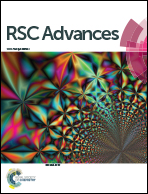Influence of the alloying elements Re, Co and W on the propagation of the Ni/Ni3Al interface crack
Abstract
The influence of the alloying elements Re, Co and W on the propagation of the (010)[101] Ni/Ni3Al interface crack has been investigated by molecular dynamics simulations and the discrete-variational method. The simulation results show that the interface crack propagates in a brittle manner at low temperature (5 K), but in a ductile manner at high temperature (1273 K), both with and without the addition of alloying elements. Owing to the scientific and technological importance of superalloys, the effects of the chemical bonding behavior between the alloying element X (X = Re, Co, or W) and Ni atoms on the crack shape, crack propagation velocity, and dislocation emission were investigated. At low temperature, the alloying elements Re and W inhibit the propagation of the Ni/Ni3Al interface crack, while at high temperature Re, Co and W can improve the ductility of Ni-based single-crystal superalloys. Furthermore, the adhesion work of the interface, surface energy, and unstable stacking energy were calculated to understand the propagation mechanism of the Ni/Ni3Al interface crack because of alloying element addition. The results of this study may provide useful information for the design of Ni-based superalloys.


 Please wait while we load your content...
Please wait while we load your content...